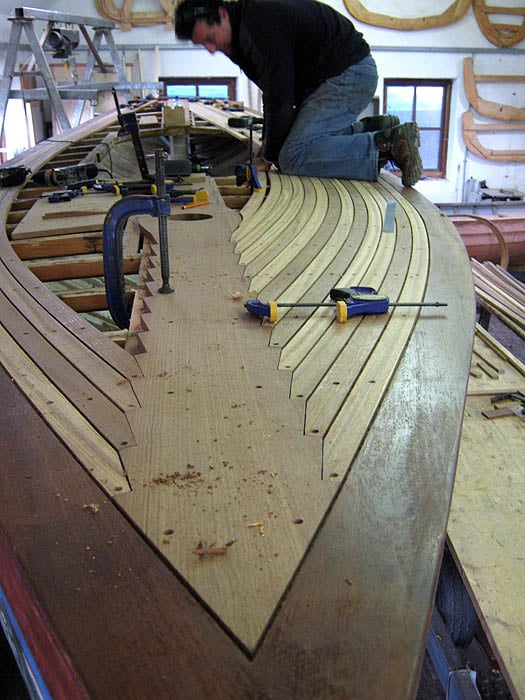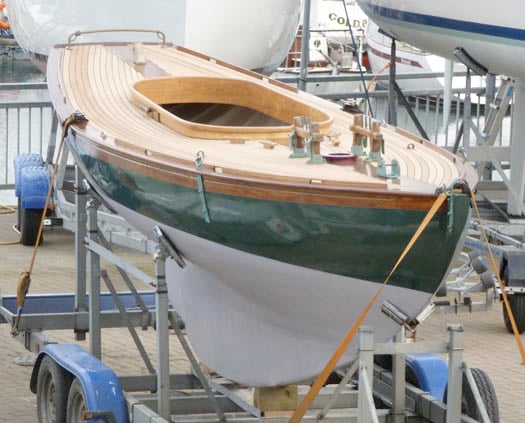#sydneyhobart – If you want guaranteed publicity for an international sailing race, start it at Christmas and send the fleet on an attractive course which is easily comprehended by the casual observer. Throw in the possibility of rugged weather and a real hint of danger, and hey presto, the sailing world wakens up from its post-Christmas slumbers and starts to pay attention.
But if you're thinking of taking this sound advice and inaugurating a new race, forget it. The annual Rolex Sydney-Hobart Race got there long ago. And when it starts in its usual spectacular style on St Stephens Day out of Sydney Harbour at its mid-summer best, be sure that sailing enthusiasts all over the world will be logging on to follow top-level sea sport.
Irish interest is extra-high this year, as the defending champion is one of our own, Gordon Maguire. He may be well settled in Australia, but he and his family return to Ireland most years. Maguire's move Down Under began in 1991 when he was one of the Irish team which won the Southern Cross Series culminating in the 628-mile Hobart Race which he won, helming for Harold Cudmore.
Twenty years were to elapse before Maguire was reunited with the Tattersall Cup, the trophy for the Sydney-Hobart overall win, which he shared as sailing master aboard the victorious four year old Reichel Pugh 63 Loki, owned by Stephen Ainsworth with further high quality experience provided by navigator Michael Bellingham.
With Maguire in charge on deck, they have someone who brings a hyper-intelligent analysis and a prodigious natural sailing talent to the challenge of sailing a thoroughbred offshore. For instance, most offshore sailors today think it's all done by instruments. Not so Maguire. He becomes almost mystical when discussing what it's like to helm a big boat as she settled into the fastest groove, and how to keep her there.
"The heel of the hull feels just right, the helm is firm – not too light, not too heavy, and the sails set at just the right angle, in the sweetest shape" he comments. "There is no substitute for feel. The information from the instruments is all historical. It takes four to five seconds for the instruments to do the calculations from when the cause of the drop in speed occurred. People who drive on the instruments are always four or five seconds behind. They are reactive, and the boat is slow. The brain is so much faster at processing all the information coming in at once than the onboard computers".
Maguire reckons that too much focusing on dials engages the front of the brain, whereas top helms instinctively rely on the subconscious, and this is particularly important in the offshore marathons. "If you consciously concentrated for that long, you'd go mad in half an hour. I switch my mind off. I am not really concentrating. Sometimes I don't know what has happened in the last 30 minutes of sailing".
It's not something you should try at home, but when Maguire is in the groove, he's unbeatable if his tactician and navigator have sent him the right way. They did that to perfection in the 2011 Sydney-Hobart Race, and Loki won overall by a cool 50 minutes. With 80 top contenders lined up for this year's event, there's no doubt about which is the boat to beat.
GOOD NEWS FROM GREYSTONES
Optimistic politicians are always looking for the first green shoots of recovery in these grim economic times, and they might find them this weekend in Greystones, where the new harbour was finished in basic form, but further development had come to a halt. There, the good news is that BJ Marinas, harbour contractors Sispar, and Wicklow County Council have signed on the dotted line for Bernard Gallagher's company to take on the running of the new marina.
BJ Marine are best known as international yacht brokers and agents of more than 35 years experience with offices at Malahide Marina, in Bangor, and in Malta. But they also run the boatyard at Bangor Marina, and have their own marina in Malta.
So they're up to speed with the practicalities of installing waterfront infrastructure. Green shoots notwithstanding, they won't be allowing the grass to grow under their feet down Greystones way. The marina furniture is already being built, it will be 100% Irish, and the first hundred berths will be available in Greystones by April.
We can expect cruising groups and passage racing organizers on the East Coast to be re-jigging their 2013 programmes accordingly. In addition to those living in the north Wicklow area who have long been seeking a permanent secure berth which doesn't involve having to battle the traffic to get to their boats in Dun Laoghaire or Poolbeg, Greystones is a very manageable destination by sea from other ports in the Greater Dublin area. It's within the DART network, which helps greatly with crew logistics in these busy times when some might wish to stay with the boat overnight, while others have other demands on their time.
With a marina, Greystones will find itself becoming an option for staging keelboat events, while the new facility will make the managing of dinghy events much easier – dinghies may only need a slip, but committee boats require a pontoon berth. So the news from Greystones is good, and it should be a wake-up call for something similar in Skerries. Meanwhile, congratulations to Bernard Gallagher and his team.
FROM PORTRUSH TO BALLYDEHOB
It's a long way from exquisite teak-laid decks that the ancient Howth 17s were reared. But when a class has been going for 114 years, a little teak treat and some intensive TLC is well earned. Not that the original timber used was suspect. Although basic stuff, it was of good quality. But in those days in the 1890s it was expected that one design classes would be replaced by newer designs at regular intervals, and some boat types reputedly had it written into their rules that their one design class association would be automatically wound up at the end of seven years.
So the notion of the boats lasting well beyond the century wasn't on the agenda at all. But thanks to a mixture of an attractive design and the boat's main association being with a very particular port in a very peculiar place (let's face it, Howth is odd), the Seventeens have been kept going well beyond their natural life span. And every so often, one of them gets smothered with an almost unhealthy amount of cosseting.
The latest one to be reborn is Deilginis, Number 11, delivered back to Howth on Thursday from master shipwright Rui Ferreira's workshop in Ballydehob in West Cork, sporting an exquisite new teak laid deck, and with much hidden but necessary work done down around the garboards and the keelbolts.
Deilginis is one of the seven boats to the design built for members of Dublin Bay Sailing Club in 1907 by James Kelly of Portrush. In those days of joined-up railway systems, they were delivered efficiently all the way by rail from the harbourside station in Portrush to the harbourside station in what was then Kingstown.
Although the class had originated with the first five boats in Howth racing from May 1898 onwards, in letting DBSC use their design the sailors from the little Howth SC were letting a cuckoo into their nest. The class was known on the Southside as the Dublin Bay 17, and for a while its Northside (or more accurately Eastside) origins were airbrushed almost completely out of world sailing knowledge. But the Eastsiders bided their time (after all, Howth is geologically twice as old as nearby Ireland), and as the fickle Dublin Bay types began to turn to fancy Bermudan rigged boats in the 1960s, the Howth men reclaimed their own.
One who played a leading role in this was Nick Massey. Around 1970 he realised that no-one could account for Deilginis, despite the fact she'd originally been built for the family of the Commodore of DBSC. Nick found her in a sorry state in a yard in Dolphin's Barn – the former Commodorial yacht had become a sort of little fishing cruiser, and was no stranger to the copious use of tar. His wife Liz, as keen on the Seventeens as her husband, quickly bought the boat, and they got her back to Howth and into commission for the class's 75th Anniversary in 1972, when all the boats had become Howth based.
Over the years, Deilginis went through a number of ownership permutations, but in 1993 Nick found himself involved again with a syndicate, and that's the way the boat has been kept going since, with a rolling syndicate involving changing membership drawn from several families. As the 2012 season went on with continued hard sailing, the syndicate agreed that the old boat needed several jobs done with varying degrees of urgency, so they looked around for a craftsman who could undertake the job, and give some promise of it being finished within a reasonable time scale.
Schull's sailing supremo Davy Harte was visiting in Howth, and Nick sought his advice. Harty suggested Rui Ferreira, who is gaining a formidable reputation down Ballydehob way for quality work on classic boats. Rui was up within days to assess the job, by September the Howth 17 was in the Ferreira workshop (it took a bit of shoe-horning to get her in), and after an intensive period of immaculate and very focused work, three months later Deilginis was back in Howth nicely on time for Christmas, the essential hidden work skillfully done, and the new deck looking only gorgeous.

The new teak deck is fitted to the 105-year-old Deilginis in Rui Ferreira's workshop in Balkydehob. Photo: Anke Ferreira

Looking only gorgeous – Deilginis with her new deck back in Howth on Thursday December 13th. Photo: W M Nixon

Happy customer – Nick Massey (left) of the Deilginis syndicate with Rui Ferreira. Nick has been actively involved with the Howth 17s for more than forty years. Photo: W M Nixon
































































